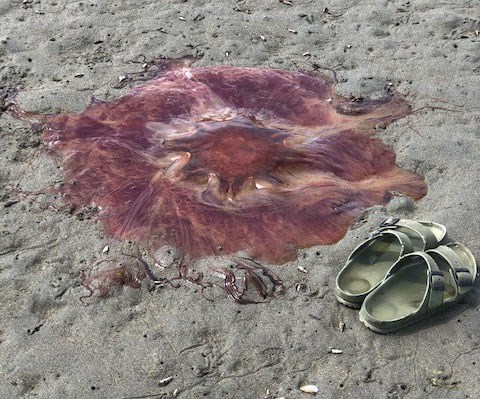A Boundary Bay resident is warning others after her dog fell ill following an interaction with a giant jellyfish earlier this week.
The woman was on a sandbar north of the boat ramp during the outgoing tide Monday morning when her dog stuck its nose into a lion’s mane jellyfish and immediately started vomiting. She took the dog to the vet as a precaution.
Dr. Ian Perry of Fisheries & Oceans Canada’s Pacific Biological Station said the lion’s mane jellyfish isn’tparticularly dangerous to people, although they do have stinging cells along their tentacles and under their bell that look like little darts.
If touched, Perry said they can cause pain and localized redness. He said the reaction may be more serious for people who may have various allergies, or if a large part of the body has come into contact with the stinging cells, which might happen if someone was swimming.
Perry said a dog, which has a very sensitive nose, might be particularly affected if the jellyfish was fresh and the dog was in full contact with it.
“My advice to my family is to look but not touch, and to be careful in the vicinity in case there are remains of the tentacles also on the beach,” he said.
The lion’s mane jellyfish is the largest known species of jellyfish with a typical size of 50 cm or so for its bell diameter.
The species is common in the Strait of Georgia and offshore of Vancouver Island. They live for about one year, and usually are found along beaches of the Salish Sea in late summer.
Older and larger animals are usually dark red or purple, although younger animals can be lighter orange to colourless.



